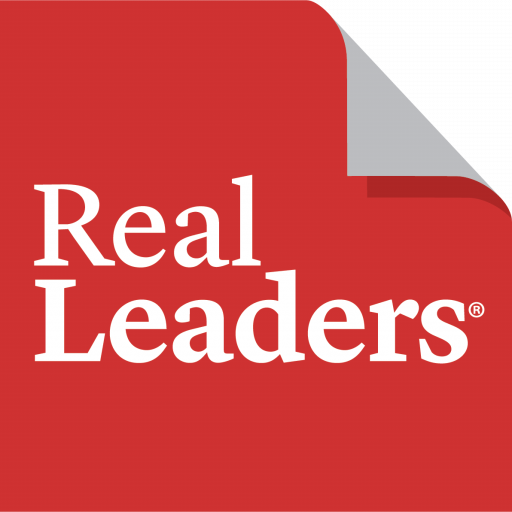Follow this advice to hit the ground running.
By Real Leaders
Everyone appreciates a good onboarding process — whether you are the new kid on the block or an existing team member trying to understand the changing dynamics when a new leader steps in. But what if onboarding simply isn’t enough?
Eileen Rieder is an executive coach and integration expert who works with leaders and organizations to integrate high-performing executives into their new roles. New Leader Integration (NLI) is a proprietary process that accelerates the time-to-value for leaders who have accepted significant leadership roles in new organizations or have been promoted to higher, more impactful roles.
“Typical onboarding efforts are focused on getting the leader administratively into the role, getting the systems and tools, introducing them to their team, and providing a brief overview of the role,” explains Rieder.
“New Leader Integration, on the other hand, meets a more aspirational goal — doing what it takes to make the leader a fully functioning member of the team as quickly as possible.”
In an Egon Zehnder survey of 588 executives (one-third of whom were C-suite), 60% reported that it took six months and 20% reported that it took nine months to have a real impact in their role. Less than one-third said they received any kind of meaningful support during their transition.
NLI engages key stakeholders early to begin the psychological contract between the leader and the stakeholders. The process reveals expectations and opportunities for the leader in the immediate and near-term and identifies pitfalls that have tripped up other leaders in the organization. Rieder says this work is best accomplished with the help of a third-party integration expert versus assigning the new CEO an in-house mentor.
“A third-party integrator can remain objective about the role and the organization,” Rieder explains.
“They have no interest in gleaning anything but honest feedback from the stakeholders, which provides for greater candor during the interview process. A well-seasoned practitioner from outside of the organization can remain curious about the role and the company, understanding how to follow a thread and ask the next best question to uncover challenges or barriers that someone internal to the organization may miss because of existing biases or assumptions.”
In Rieder’s experience, the most common roadblock is the disconnect in expectations between the hiring manager and other key stakeholders within the organization. “A common expectation is the degree to which the hiring manager expects the new leader to be an agent of change,” Rieder says. “Key stakeholders may not see the case for change, and it may not be clear that the new leader was brought on specifically to bring about that new change.”
There can also be a disconnect in the expectations related to the magnitude and pace of the change effort. One of the keys to effective integration is exposing those disconnects for leadership so they can be transparently discussed and expectations can be aligned.
Advice From a CEO
John Arendes has over 30 years’ experience leading teams in the software and compliance training industries. He served as CEO of Traliant and grew the business by double digits under his tenure. He is a strong believer in continual leadership development, and he recently completed New Leader Integration for his new role.
“Upon learning that I would be going through this integration process, I was excited about the opportunity to do this assessment,” he says. “I believed it would help me get a head start on
understanding how I could work effectively with the organization based on my strengths and weaknesses. My understanding of my weaknesses, in particular, would help me avoid any potential pitfalls early on in my tenure.”
During his coaching sessions, Arendes became more aware of his thought patterns. “I realized that sometimes what I thought was a problem with only two possible solutions can have several solutions if I approach it from a different perspective,” he says.
Arendes says that while he didn’t have any issues with receiving feedback on himself, he noticed that his team members initially hesitated to share honest feedback. “They were concerned that it would get back to me and affect their working relationship,” he recalls. “However, the coach helped us overcome this hurdle, and eventually we could provide and receive feedback more freely.”
Without going through the integration process and its associated coaching, Arendes says he would have taken much longer to understand what his team values and how he can contribute value to them. “As a first-time CEO, there are various nuances that one does not consider initially,” he says. “You must look at the entire organization and assess how a decision can impact many people.”
To a new leader considering the implementation of an integration process, Arendes has the following advice:
- Recognize the value of the program. “It’s a powerful tool for accelerating your integration into a new leadership role, understanding the organization’s culture, and building solid relationships with your team and peers,” he says.
- Be committed. “To get the most out of the process, staying committed and maintaining consistency is essential.”
- Establish confidentiality and trust with your coach. “Privacy in the coaching relationship is crucial,” Arendes says. “Being open and honest with your coach is vital, and your discussions should be confidential and nonjudgmental. Have a willingness to be transparent about your challenges, strengths, and areas for growth.”
- Identify your objectives. Arendes says to approach coaching with transparency about challenges and your need for help.
- Build relationships. “Use this process to enhance your relationship-building skills within your team and with key stakeholders. Effective relationships are often the foundation of leadership success,” he says.





